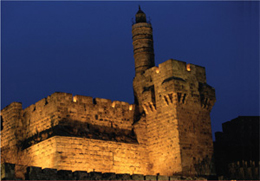The uncertainty that has been prevalent among traders in
Ramat Gan for the past few months was still evident as the Israel Diamond
Exchange (IDE) closed for its annual two-week summer break in August. Both
suppliers and buyers were prepared to wait until after the break to reassess
prices and market conditions, with the hope that trading will improve after the
seasonal summer quiet.
“People are waiting for the end of the holiday. Demand in
August has been slow but you feel that there will be demand in September,” said
David Kuchler, chief executive officer (CEO) of EZ Diamonds, a manufacturer of
small, fine-make rounds from .01-carat to .75-carat sizes. “I don’t foresee an
immediate rise in prices but I expect they will stabilize as demand improves
when people start thinking about the holiday period.”
Isaac Berman, owner of I. Berman Diamonds, agreed, and
suggested that many in the trade are waiting for the Mumbai show, which took
place in late August, and, more importantly, the results of the September Hong
Kong show.
“It has been quiet all over. Six months ago, the East was
booming and the U.S. was quiet. Now, the East is down and the U.S. is stable,”
Berman said. “I am sure that Hong Kong will be a good show and that it will
give the market a strong push for the end-of-year high season.”
SIGNS OF STABILITY
Until then, however, Berman noted that manufacturers and
dealers are working with a slightly lower profile as they wait to see how the
market will react. Kuchler believes that signs of stability are starting to
show, with rough prices beginning to steady and buyers once again inquiring
about goods.
Kuchler observed that prices for small, better-range
diamonds have declined sharply since January, a reaction to the overproduction
and over-buying of collection goods by watch companies in 2011. He added,
however, that there has been some stability in the better-make smalls, clean to
piqué goods, that are popular in the Chinese market.
During periods of uncertainty when prices are high, Kuchler
noted, buyers tend to downgrade the quality of goods they are looking for in
order to maintain their price points and inventory capacity. Now that everyone
has shifted to more affordable goods, there is a supply shortage in the lower
categories. As a result, the gap between the high and midrange goods has shrunk
to the point that people are moving to the higher range again because there is
a shortage of other goods. Also, these goods are now more affordable and buyers
can purchase at this level and still stay within their budgets, Kuchler
explained.
Dealers report that there is a scarcity of VS to SI goods in
nice makes and also shortages in fancy shape goods, particularly princess cut
stones, because manufacturers stopped cutting them when prices fell.
NONCERTIFIABLE PROFITS
The biggest challenge at the moment is to maintain profit
margins, especially with rough prices being high relative to the resulting
polished. In this environment, noncertified goods often offer greater price
flexibility and profit opportunities than certified diamonds.
“Today, it’s easier to do business without certificates
because the certified goods have a fixed price whereas the pricing of
noncertified goods is more flexible and potentially more profitable,” Berman
explained. Kuchler agreed, adding that certified stones are undervalued right
now, particularly in the smaller goods above .30 carats, and that noncertified
stones are more attractive to manufacturers in these sizes.
Kuchler explained that there is currently not sufficient
demand for certified goods on the market to influence manufacturers to raise
the number of stones they send for certification. “So buyers tend toward
noncertified goods,” he said. “You can get better prices with uncertified goods
than those with certs. The gap is enough that the cost of certifying the stone
is not worth it.”
Berman noted that buyers are more insistent on certificates
when it comes to the better-quality goods.
BANK SUPPORT
For many in the industry, the key to improving market
activity is stronger support from the banks. Berman stressed that the Israeli
industry has an opportunity to gain significant market share in the current
quiet market but such a surge will require greater bank credit.
He recalled that the Indian industry managed to achieve
exponential growth after the market downturn of 2008 only with government
support and easier bank credit. With the Indian government now cutting back,
Berman said it was an opportune time for Israel’s banks to ease their credit
requirements to enable the local industry to grow and increase market
share.
“Anyone working in the diamond industry today must be optimistic about our potential for growth because there are too many negative
things that can be overwhelming,” Berman said. “I believe we will get through this period and continue to
operate on a high level because Israel has everything it needs to be a leading
diamond market.”

THE MARKETPLACE
• Dealers are hoping the Mumbai and Hong Kong shows spark
stronger third-quarter trading.
• Demand is relatively stable for pointer sizes and 1-carat,
I+, VS-SI, triple EX goods.
• Demand is weaker for larger stones above 3 carats.
• Rough trading remains weak.
Article from the Rapaport Magazine - September 2012. To subscribe click here.